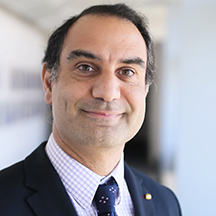
Hemangioblastoma
What is a Hemangioblastoma?
A hemangioblastoma is a rare type of benign brain tumor that originates from blood vessels in the central nervous system. These tumors most commonly occur in the posterior fossa, which is the region at the back of the brain near the cerebellum, but they can also develop in the spinal cord. Hemangioblastomas are composed of a central mass of blood vessels surrounded by supportive cells called stromal cells.
The exact cause of hemangioblastomas is not well understood. However, it is believed that these tumors develop as a result of abnormal growth and proliferation of the cells that form the blood vessels. In some cases, hemangioblastomas are associated with a genetic condition called von Hippel-Lindau (VHL) disease, which is characterized by the formation of tumors in various organs including the brain and spinal cord.
Treatment for Hemangioblastoma
Minimally invasive keyhole surgery is now possible for most Hemangioblastomas
Symptomatic hemangioblastomas generally require surgical removal. At Pacific BTC, we have a large experience treating these tumors with minimally invasive keyhole approaches.
By incorporating cutting edge technology and instrumentation with proven surgical experience, we make hemangioblastoma surgery safer, less invasive and more effective.
Learn more about our multidisciplinary team
Overview
These relatively uncommon benign tumors are comprised of blood vessels and typically arise in the cerebellum, but can also occur in the brainstem and spinal cord.
They typically have a solid and a cystic component. Hemangioblastomas may also occur in patients with Von Hippel-Lindau disease, an inherited autosomal dominant condition in which both benign and malignant tumors develop including retinal angiomas, pancreatic cysts, pheochromocytoma and renal cell carcinoma.
Symptoms
Patients with a cerebellar hemangioblastoma typically develop symptoms related to the enlarging tumor and cyst putting pressure on the cerebellum or causing hydrocephalus (excess cerebrospinal fluid).
Common symptoms include headaches, dizziness, problems with coordination and balance, visual disturbances, and weakness or numbness in the limbs. In some cases, these tumors can also lead to increased intracranial pressure, resulting in nausea, vomiting, and altered mental status.
Diagnosis
Diagnosing hemangioblastomas involves a combination of imaging studies, such as magnetic resonance imaging (MRI) or computed tomography (CT) scans, to visualize the tumor and assess its size, location, and relationship with nearby structures. Additional tests, including angiography, may be performed to evaluate the blood supply to the tumor.
The solid part of the hemangioblastoma (mural nodule) enhances intensely after contrast administration on both MRI and CT while the associated cyst (fluid) does not enhance.
Treatment
The primary treatment for hemangioblastomas is surgical resection, which involves removing the tumor while preserving surrounding healthy brain tissue. The goal of surgery is to achieve complete removal of the tumor and alleviate any compression or pressure on nearby structures. However, the location and size of the tumor can sometimes make complete resection challenging, and in such cases, partial removal or debulking may be performed to relieve symptoms and reduce tumor size.
Radiation therapy may be considered as an adjunct to surgery in cases where complete resection is not feasible or when there is a risk of tumor recurrence. The use of targeted therapies or embolization procedures to reduce blood supply to the tumor may be considered in select cases, especially when associated with VHL disease.
Regular follow-up is essential for individuals with hemangioblastomas, as these tumors have the potential to recur or develop new lesions over time. Imaging studies and clinical evaluations are typically performed at regular intervals to monitor for any signs of tumor growth or recurrence.
Symptomatic cerebellar or brainstem hemangioblastomas are typically treated by surgical removal through a sub-occipital or Retromastoid Craniotomy. The goal of hemangioblastoma surgery is to remove the enhancing tumor nodule completely which is able to be accomplished in 80-90% of patients.
For partially removed tumors, radiosurgery or stereotactic radiotherapy is relatively effective. Any patient diagnosed with a hemangioblastoma should have a thorough evaluation for Von Hippel-Lindau disease.










